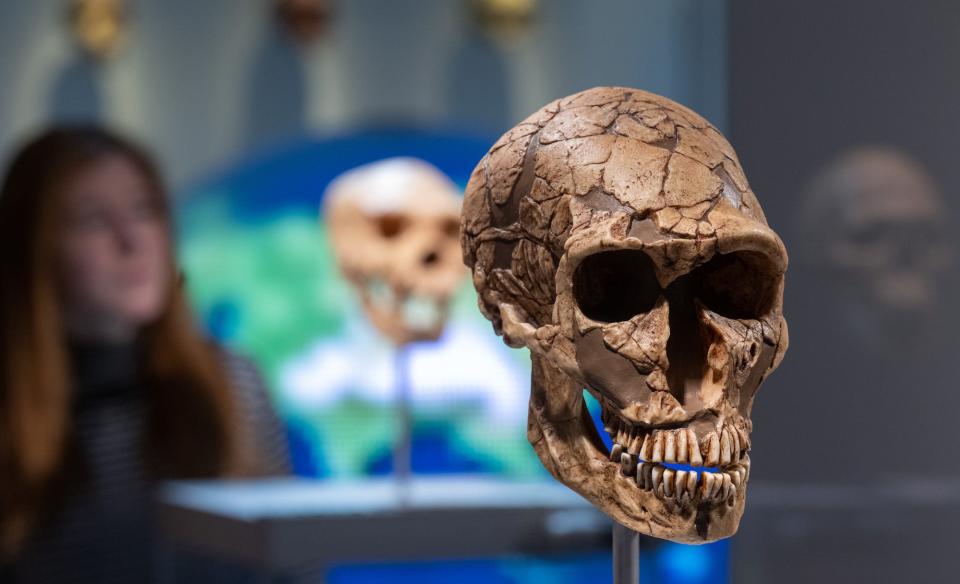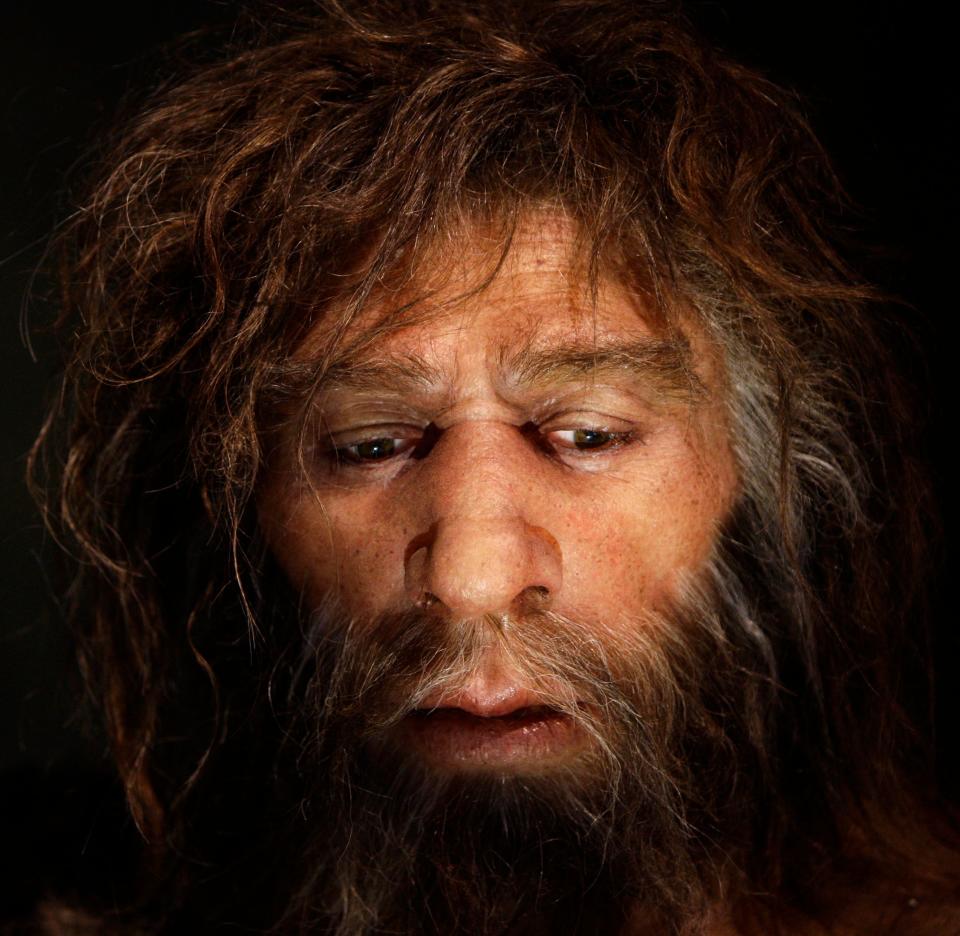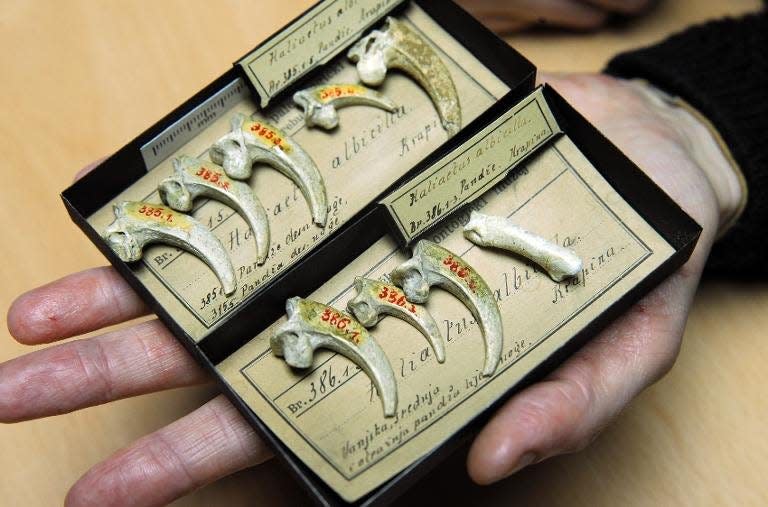-
Until recently, the consensus was that Neanderthals and Homo sapiens were separate species.
-
But most humans carry about 2% Neanderthal DNA, challenging the idea that we are different.
-
Other studies suggest that Neanderthals were not inferior to Homo sapiens and should be considered human.
Neanderthals have long been portrayed as dumb, brutal monsters who were genetically inferior to our direct ancestors, the first modern humans.
These ape-like creatures spoke with grunts, suffered from disease, and went extinct 40,000 years ago after losing the evolutionary battle against Homo sapiens.
Or at least that’s what we’ve been told. However, recent discoveries are changing that view and reigniting a debate among scientists about whether Neanderthals should be considered the same species as early modern humans.
If Neanderthals belonged to our species, it could reshape the history of human evolution and question how we define what makes us human.
Most of us have some Neanderthal DNA.
The first Neanderthal fossils were identified almost 200 years ago. By now, you would think that scientists would have already decided whether they should be defined as a separate species from Homo sapiens.
But it turns out this is a topic of intense debate, Antoine Balzeau, a paleontologist at France’s National Museum of Natural History, told Business Insider.
“When we first talked about fossils in the 19th century, there was no real debate about specific species or not, simply because at that time, humans were seen as a species, but by default,” he said.


As more fossils emerged, scientists began to question the strict separation between species.
Still, until recently, the consensus was largely that Neanderthals should be considered separate. Hominids, who roamed Europe 430,000 years ago, only interacted briefly with Homo sapiens who emerged from Africa and arrived in Europe about 50,000 years ago.
The lineages split about 500,000 years ago, relatively recent in the history of human evolution, but so long ago that they seemed significantly different. For many, that evidence was enough to close the debate: Neanderthals and Homo sapiens were separate species.
That view began to change in 2008, when Swedish geneticist Svante Pääbo achieved something that was thought impossible: he sequenced the genome of a Neanderthal by extracting DNA from ancient bones.
Through his research, Pääbo was able to show that there is a little Neanderthal in most of us. In fact, he demonstrated that most living humans carry with them 2% of Neanderthal DNA.
Evidence also suggests that human ancestors and Neanderthals likely had children together when they cohabited about 50,000 years ago.
This news created a dogmatic gap, opening the possibility, once again, that Neanderthals and humans should be considered the same species.
After all, according to the strict biological definition of species, animals of different species should not be able to produce fertile offspring.
“It was definitely a big change at the time,” Laura Buck, an evolutionary anthropologist who studies hybridization between hominid species, told BI.
“I think it’s kind of brought that discussion back to the forefront,” he said.
Were Neanderthals more than just our distant cousins?
The idea that species can’t reproduce is “intuitively appealing because it’s pretty clear,” Buck said. “But the biology is not clear.”
He points out several examples of mammals that are known to interbreed and have fertile offspring, such as wolves and dogs, despite being clearly defined as separate species.
For her, a better definition of Neanderthals, the most scientifically proven, is the first: the characteristics of their bones separate them from modern humans and their direct ancestors.


“I know there are several different newspapers that say that if you shave a Neanderthal, put him in a suit and put him on the New York subway, no one would notice, I don’t think that’s true,” he said. .
“I think we would definitely think they look a little weird,” he said.
Balzeau agrees. “There may be some discussion among specialists about how we define different groups, but from a paleontological point of view, Homo neanderthalensis and almost Homo sapiens have very clear anatomical differences,” Balzeau said.
For others, however, the genomic information should be another argument to free the Neanderthal from its knuckle-dragging stereotype.
That is the case of Paul Pettitt, an archaeologist specializing in the Paleolithic at Durham University in the United Kingdom.
“It would be a conjecture to use that evolutionary divergence to assume that different species exist,” he told BI.
Can culture define a species?
Over the past two decades, excavations have begun to emerge showing that Neanderthals may have been much more sophisticated than previously thought.
Pettitt is among those who, until recently, were skeptical that Neanderthals could have any sense of sophistication.
“Until, say, 20 years ago, Neanderthal behavior was considered quite stupid, or at least quite limited, and Homo sapiens, on the other hand, were considered to be quoting Shakespeare, as they dance around Europe,” he joked.
“Which is, of course, nonsense, but it is a deeply held view,” he said.


After all, relative to their size, some studies suggest that Neanderthals had brains at least the same size, if not larger, than our ancestors, indicating that they may have been very cerebral, Pettitt said.
“You don’t buy a high-end computer simply to use it as an alarm clock. There has to be an evolutionary reason why Neanderthals chose this remarkably metabolically expensive fabric,” he said.
Studies have suggested that Neanderthals were skilled hunters and fur workers, created rudimentary jewelry, had a complex stone industry, and even worked with pigments.
Some scientists even believe that they may have had some form of spiritualism and would bury their dead, revere lions and may even have created cave paintings, although that evidence is still a matter of debate.
For Pettitt, this suggests that since Neanderthals and humans lived together in Europe, it is very likely that they shared a culture or learned by observing each other.
If they spoke, he said, “we can assume that they probably spoke different languages. But that similarity suggests that there was, in fact, a shared meaning, however simple.”
Could Neanderthals be called humans?
There is a broader question at play here: should Neanderthals be considered human?
“What humanity is depends largely on what group of people you’re talking to,” Buck said.
“It’s something that is culturally defined, but it’s also something that has a kind of value judgment. We talk about inhumanity. We talk about humanity. It’s not something that refers only to different types of organisms,” he said.
With the large number of people alive today, there is arguably more Neanderthal DNA on Earth than ever before.
Angela Saini, author of “Superior: the Return of Race Science,” argues that there is a real risk of being wrong. Those today believed to have more Neanderthal DNA could be mistakenly considered inferior.
Early studies have linked these Neanderthal genes to modern health effects, such as autoimmune diseases, diabetes, and some types of cancer, although it is still unclear how exactly these genes affect the health of the person who carries them. Neanderthal genes have also been notably associated with COVID-19 infection.
Because East Asian populations have been found to carry slightly more Neanderthal DNA on average, there is a real danger that this information will be used to discriminate.
The other side of the coin is that our interpretation of Neanderthal culture has changed dramatically in recent years. Saini points out that the image of Neanderthals was rehabilitated just as people began to bring them closer to the populations of Europe, and genetic information began to suggest that they had lighter skin and red hair.
“That’s what I find particularly irritating. About a hundred years ago, the supposed similarity between Neanderthals and Australian aborigines was used as justification to remove modern humans from the circle of humanity,” he told WNYC.
“Now, because we see that Neanderthals have some relationship to modern-day Europeans, Neanderthals themselves, an extinct species, have been thrown into that circle of humanity.”
Rewriting our history
We are still in the process of understanding Neanderthals and our relationship with them. As we begin to unravel the history of human and Neanderthal evolution, scholars’ decision to separate the two and describe one as superior is coming under new scrutiny.
When revealing his research, Pääbo reflected on how humans living on Earth today are quite exceptional, not necessarily because Homo sapiens is intrinsically better, but because there is very little time in the history of human evolution in which Homo sapiens was the only hominid or human on the planet.
“If Neanderthals and Denisovans had survived, how would we deal with it today?” said Pääbo.
“Would we experience even worse racism against them than we experience among ourselves today, because in some ways they were really different, or could we think differently and say that if we had them here today we wouldn’t have a single type of humans?” she added.
“I think both are possible and in some ways it reflects our view of humans and how we speculate about that.”
Read the original article on Business Insider